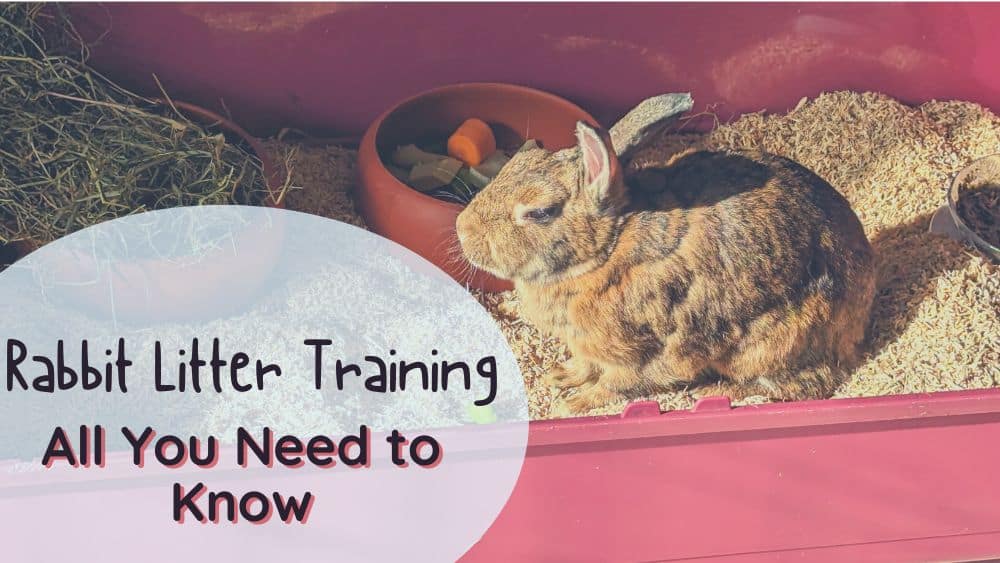You might be surprised to know that rabbits can be litter trained, just like cats! Rabbits are intelligent creatures and want to keep their living area clean, so litter training can come quite easily to many rabbits.
Let’s face it, rabbits poop a lot! New rabbit owners are often quite surprised by how much their bunny poops. Don’t worry: litter training makes cleaning up after your bunny easier and their living area more hygienic.
So, how do you get started with rabbit litter training? Let’s take a closer look together!
Rabbit Litter Training Basics
What is Litter Training?
Litter training means having a litter tray in your rabbit’s living area where they go to the toilet. Once they learn that’s their toilet, they will return to it anytime they need to pee or poop rather than going all over their enclosure (or your home).
Can All Rabbits Be Litter Trained?
In theory, all rabbits can be litter trained, although some might take to it quicker than others. Some rabbits I’ve worked with took longer to learn, but they got there in the end!
Litter train your rabbits as soon as you bring them home so they can get into the habit immediately. However, even older rabbits can learn to use a litter tray.
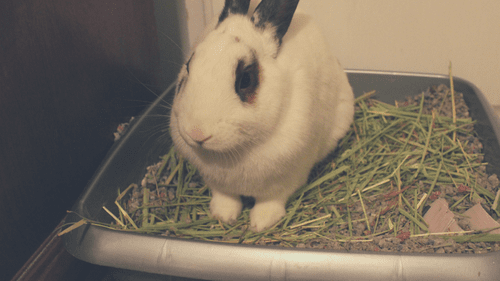
In fact, some people find training an older rabbit much easier. We rescued our rabbit when he was four years old, and he took to litter training within the first couple of days of being home!
Neutered or spayed rabbits are likely to be easier to litter train. Intact rabbits tend to pee and poo around the home to mark their territory. This is due to their hormone levels and is more common in male bunnies. Getting your rabbit neutered or spayed can help with training and promote better health.
Benefits of Litter Training
There are many benefits to toilet training your bunny, including:
- Keeping their living area and your home more hygienic
- Making free roaming or time out of their enclosure less stressful for you
- Enabling you to keep an eye on your rabbit’s health, as you can quickly notice changes in their toilet habits
- Making cleaning their enclosure much easier for you
Getting Started
The Supplies
Before you get started, you’ll need to gather the following supplies:
A litter tray
The tray should be large enough for your rabbit to sit comfortably. If you have a baby bunny, it’s helpful to buy a tray that’s big enough to accommodate them as they grow to save yourself money.
Doctor of Veterinary Medicine Melissa Witherell recommends a 9” x12” litter box for a single rabbit and a 15” x18” litter box for two rabbits.
A tray with low sides is best so your rabbit can access it easily. Rabbits feel more comfortable with a tray with no cover (or a removable cover). Cat litter trays work well, as some corner rabbit litter trays can be too small depending on the rabbit breed you own.
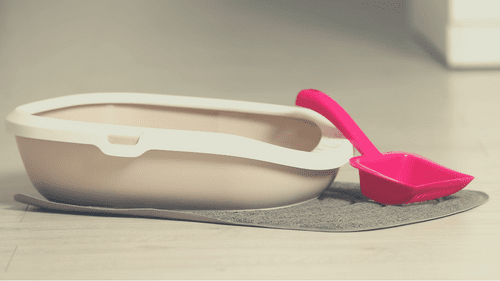
If your rabbit is going to be free roaming and has access to multiple rooms or floors of your home, you might want to get more than one litter tray. This ensures they have access to a tray as soon as they need to go to the toilet.
If your rabbit is mischievous like mine was, you should get a litter tray that attaches to the side of its enclosure rather than a free-standing one. This stops them from tipping it over!
Quality litter
You’ll need to put high-quality litter in the tray to soak up your rabbit’s pee. Organic and paper-based litters are usually best. It’s important to avoid pine or cedar shavings as these are linked with health problems in rabbits.
It is best to use litter made from alfalfa, wheat grass, oat, citrus, paper, or compressed kiln-dried sawdust.
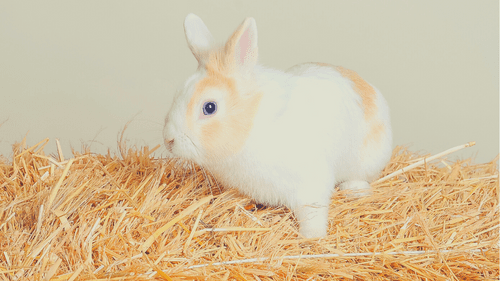
You can choose to use hay, but in my experience, this doesn’t absorb the pee as well as litter and, therefore, can be smelly!
Ensure any litter you choose is safe for small animals. It’s best to avoid most cat litter as it can be toxic for rabbits.
You should also avoid any litter that states it’s clumping. This is because rabbits can be prone to eating their litter, and clumping litter can cause a blockage.
A hay rack
Rabbits like to eat and go to the toilet simultaneously, so having a hay rack near their litter tray promotes this natural behavior.
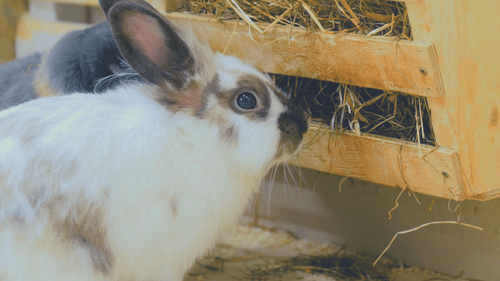
A poop scooper
You’ll need something to scoop your bunny’s poop out of its litter tray. Any scoop will do as long as the holes aren’t so big that their poops will fall through.
A pet-safe cleaning spray
A pet-safe disinfectant spray will help you to clean out your rabbit’s litter tray and living area without leaving behind any harmful chemicals.
Setting Up
Now it’s time to set up your rabbit’s litter tray! It’s best to put it where your rabbit chooses to go to the toilet. This will usually be in one corner of their living area.
If you’re setting up the litter tray before you bring your bunny home, don’t worry, you can always move it later. Choose a corner, and they’ll soon show you if they prefer to use a different area.
Ensure your rabbit has easy access to its litter tray with no obstacles getting in the way. As we discussed earlier, choosing a litter tray with low sides is essential.
Put a thin layer of litter in the bottom of the tray. There’s no point filling it up high, as you’ll be changing it regularly, and rabbits don’t need a lot of litter.
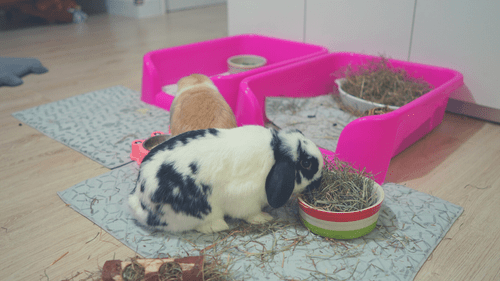
You can put your rabbit’s hay rack up next to their toilet area so they can reach it when using the tray.
If you position it so they have to hop into the litter tray to reach it, it can also help encourage them to use their toilet. Pop some high-quality hay in the rack and you’re ready to get started!
How to Litter Train a Rabbit
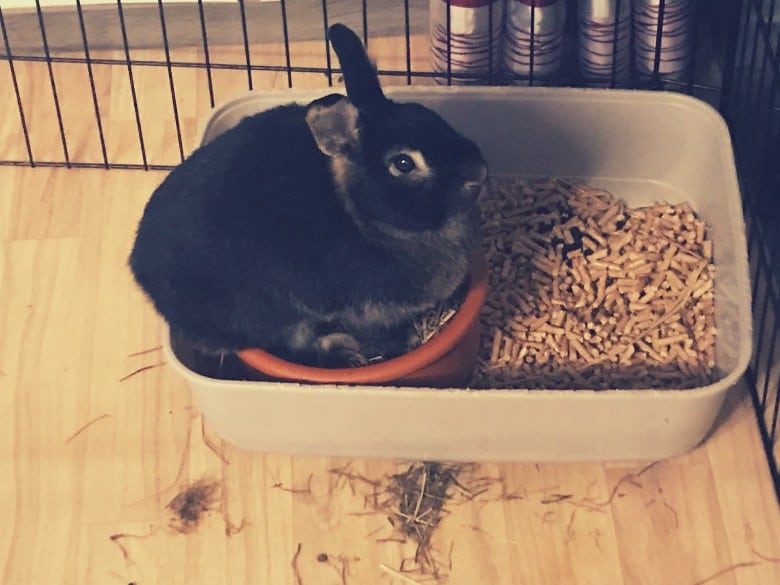
Litter training is pretty straightforward, but it takes time and patience. Don’t worry if your rabbit doesn’t get it straight away. Be consistent and you will soon see results.
1. Limit Space
Rabbits should have plenty of space to run and play to keep them healthy and happy. However, while you’re going through the training process, it is best to keep your rabbit in a smaller area, even if they will be free roaming later.
This helps them get used to the litter tray and prevents accidents all over your home. I like to think of it as setting them up for success!
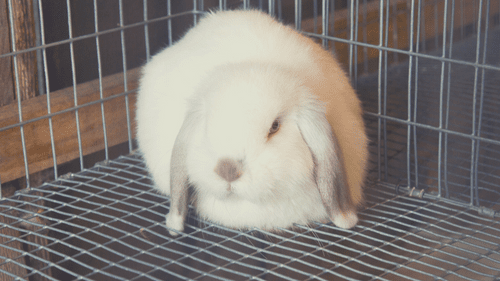
You can gradually increase the amount of space they have as they get the hang of things. A dog pen can work well as you can adjust the shape and size easily, and they’re typically sturdy enough to keep a rabbit enclosed.
2. Put Accidents in the Litter Tray
If your rabbit poops outside the tray, you may want to pick up the poop and put it in their litter tray. This helps them to understand that this is where they should go to the toilet.
It can be tricky if your rabbit pees outside the litter tray. Putting plenty of newspaper or hay on the floor in rabbits enclosure can be helpful. You can pick it up and put it in their toilet if they pee on it.
3. Move Them to the Litter Tray
If you notice signs of your rabbit going to the toilet outside the litter tray, you can say ‘no’ in a firm voice and instead try to herd them towards the litter tray.
Don’t shout at your bunny as this can scare them since they’re prey animals. You can use treats to encourage them in the right direction.
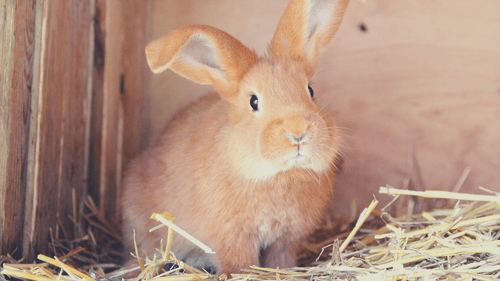
It’s important to ‘catch them in the act’ with this. Otherwise, they won’t understand what’s happening. This means you’ll need to keep a close eye on your rabbit during training, especially when they’re out of their enclosure.
If your rabbit is comfortable with handling, you can lift them up and put them in the tray if you catch them trying to go to the toilet elsewhere. However, some rabbits find handling very stressful so you shouldn’t do this unless you already have a good bond.
4. Move the Tray
If you notice your rabbit regularly goes to the toilet in one area outside the litter tray, they’re telling you that’s where they would prefer their toilet. You can move the tray to their chosen location to encourage them to use it.
5. Leave Some Litter Behind
It is best if you clean out your rabbit’s litter tray every day or two, depending on how much they use it. While you’re toilet training, don’t take away all of the dirty litter. Instead, leave a little bit of used litter behind each time you clean the tray so they can smell it. This will encourage them to keep using the litter tray.
6. Give Them Treats
Just like training a dog, you can use treats to give your rabbit positive reinforcement. If you see your rabbit using the litter tray, praise them and offer a tasty snack as a reward.
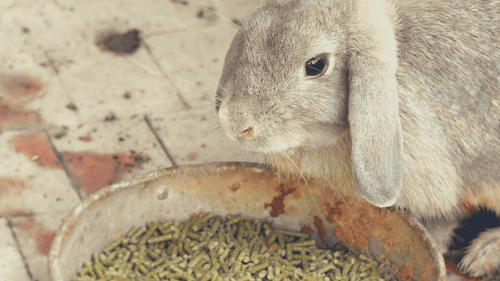
You must do this right as they’re using the tray, otherwise, they won’t make the association between the treat and going to the toilet.
7. Increase Time Outside Their Enclosure
Once your rabbit has got the hang of things, you can gradually keep increasing their time out of their enclosure exploring your home. Keep an eye on them first and use the steps above when needed.
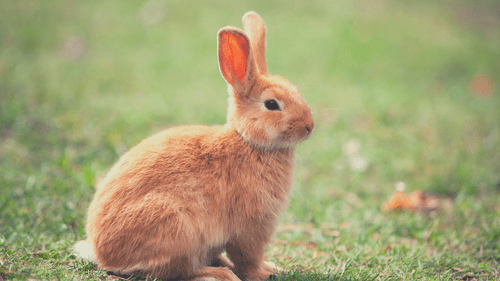
Once they’re using their toilet consistently, you can relax and give them full access to their living area or your home if they’re free roaming.
Congratulations! You’ve litter trained your rabbit!
What if Rabbit Litter Training Isn’t Working?
Accidents Are Natural
If you’ve followed all the steps we’ve discussed and your rabbit is still having accidents outside the litter tray, try not to worry. Accidents are a normal part of the training process, especially if you have a young rabbit. The occasional poop outside the litter box is expected even with fully litter-trained bunnies.
Do not scold or punish your rabbit, as they won’t understand why this is happening, which can ruin their trust. The last thing you want is for your bunny to become afraid of you! Instead, focus on being patient and calm and repeat the steps above.
Clean Messes Effectively
When your rabbit has accidents elsewhere, it’s essential to clean them up thoroughly. If anywhere else in the home still smells of their poop or pee, they are likely to keep going to the toilet in this area because they think that’s where they’re supposed to go.
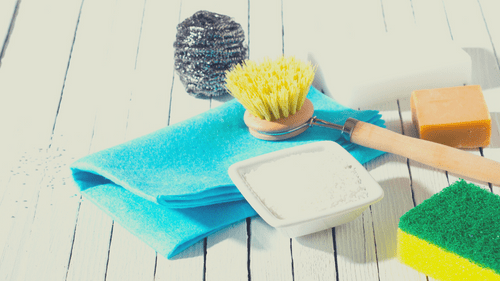
Remember that it’s best to use pet-safe cleaners, especially if the mess is in your rabbit’s living area. Avoid using a cleaner with bleach in it, as it contains ammonia which is also in your rabbit’s pee! Veterinary provider Vets4Pets recommends using a biological washing powder or specialized enzymatic pet urine cleaner.
Consider Neutering Your Rabbit
If your rabbit isn’t spayed or neutered, it’s worth considering getting the operation done. This can help with litter training and has a range of other benefits.
The Rabbit Welfare Association and Fund explain that it prevents unwanted pregnancies; allows rabbits to bond safely; lessens behavioral issues, and reduces the risk of health issues such as reproductive cancers.
Get Your Rabbit Checked by a Vet
Some conditions can cause incontinence. If your rabbit is having a lot of accidents, especially if they were previously well litter trained, it might be worth getting them checked out with your vet.
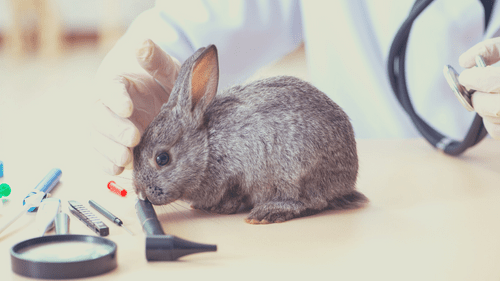
Also, mobility issues might make it difficult for your rabbit to get into their litter tray. You can identify health issues quickly and get effective treatment for your rabbit by getting a check-up.
Related: How to Know You Have a Sick Rabbit
Conclusion
Litter training your rabbit has many benefits for you and your furry friend. Most rabbits can be litter trained, so take your time and follow the discussed steps. Patience and consistency are key. You’ll have a litter-trained bunny before you know it!
References
Melissa Witherell, DVM, (2022), How to Litter Train Your Rabbit. Pet MD.
House Rabbit Society, (2022), Litter Training.
Vets4Pets, (2022), Litter Training Your Rabbits.
Rabbit Welfare Association and Fund, (2022), Neutering – Castration and Spaying.


